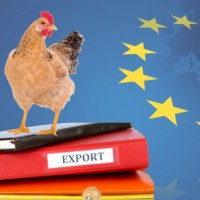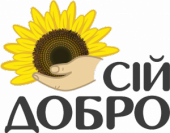News
13.11.2024
Holding the market: will Ukraine continue to export chicken to the EU?

Poultry meat is one of the main items of Ukrainian agricultural exports to the world and to the EU market. In 2023, about 41% (173.2 thousand tonnes) of Ukraine's total poultry exports were supplied to the EU. The Netherlands (58.9%) and Slovakia (31%) were the key importers of these products. Ukrainian chicken is also available on the markets of Saudi Arabia (27.3%) and Turkey (9.2%).
At the same time, the EU is the world's largest producer (11.6 million tonnes) and exporter (1.8 million tonnes in 2023) of poultry products.
Historically, poultry meat in Europe has been a sensitive product for its agricultural sector. Therefore, since the introduction of the EU's autonomous trade preferences for Ukraine in June 2022, which were designed to support the Ukrainian economy during the war and fully liberalise access for Ukrainian agri-food products, including poultry, to the EU market, this has caused concern among local producers.
What is the real impact of the Ukrainian poultry sector on the EU market? What will be the export of poultry meat from Ukraine to the EU after the current ATM package expires in June 2025? These and other issues were the focus of a regular online discussion of the Ukrainian Agribusiness Club (UCAB).
The threat of cheap imports
Paul-Henri Lava, Deputy Secretary General of the European Association of Poultry Processors and Poultry Trade (AVEC) believes that Ukrainian poultry production is 30-40% cheaper than in Europe due to cheap feed, which accounts for 70% of production costs in poultry farming. Therefore, Europeans expected an influx of cheap chicken from Ukraine. ‘Ukrainian imports have affected prices, which have dropped significantly. There was a snowball effect: first, Poland, the main producer of chicken in the EU, was forced to reduce its prices to counter this new competition, followed by Romania and Slovakia. Chains began to cut prices and use affordable imports from Ukraine, which can come fresh, unlike Brazil or Thailand, which only import frozen products. The threat of unrestricted imports from Ukraine also blocked investment. So, when it was decided to set a limit, the market situation improved. So, unrestricted imports are no longer acceptable,’ said Paul-Henri Lava.
‘Ban’ on caged birds
Manon Dubois, Policy Advisor for the poultry sector, representative of the European Federation of Farmers and Agricooperatives (COPA COGECA), described the situation on the egg market: ‘The impact of the ATM was quite significant, as the thresholds set in the Liberalisation Agreement were actually four times higher than those already in the Association Agreement. As in the case of poultry consumption, there is a greater impact on processed foods than on the fresh egg market.’
The advisor explained that Europe has a different system of categorising eggs, namely: organic eggs, eggs from free-range birds, eggs for production, and the last category is caged production.
‘The EU has had a ban on caged poultry for 20 years. At the same time, almost all products from Ukraine come from caged birds. Consumers have the right to know about this,’ - says Manon Dubois.
Dependence on the EU
Despite European concerns about Ukrainian chicken, there are two facts that even the European Commission has acknowledged. First, European poultry production has indeed increased. And secondly, even in terms of global markets, the European Union remains the third largest exporter of poultry meat after Brazil and the United States. This was stated by Nazar Bobitski, Head of the UCAB EU office.
According to Oleksandra Avramenko, Head of the UCAB European Integration Committee, in addition to large poultry production corporations, there are many home-grown producers in Ukraine. This also affects the market, even though the private sector has shrunk from 36% (2005) to 10% (2023). These are still high figures.
In 2021, foreign trade in poultry products amounted to 458 thousand tonnes, in 2022 the level decreased, and in 2024 it is expected to reach 440 thousand tonnes. Currently, for 9 months of this year, exports amounted to 330 thsd tonnes.
‘Before the war, most of the products were exported by the Black Sea. Now the situation has changed. And although the green corridor is working, poultry products cannot be exported by sea, as refrigerated trucks do not enter Odesa. So now there are not many options for export. That's why we depend on the European Union,’ explains Oleksandra Avramenko.
In her opinion, the margin of chicken production in the EU is growing, which means that the European market has not only stabilised but is also working well.
A study by the Wageningen Institute (the Netherlands) shows that in 2017, the cost of chicken production in the EU was €0.8/kg live weight, while in Ukraine it was €0.60-0.67/kg live weight.
‘The situation has changed, now the cost of energy in Ukraine is almost equal to the EU, and the cost of feed has also increased. In addition, the number of poultry decreased in 2022-2023, so even if we assume that we can produce affordable feed, there is no one to feed it to. For example, the cost of soybeans, which are mainly used for feed, is becoming increasingly high compared to the EU. Yes, we have opportunities for advantages, but this does not mean that we can use them. As a result, the cost of producing chicken is quite different. It is also worth mentioning the social component of production, as companies help mobilised workers and their families. Therefore, we are losing our competitiveness,’ said Oleksandra Avramenko.
Brazil vs Ukraine
The cost of producing chicken in Paraná, one of Brazil's largest agricultural regions, is R$40-44, which is approximately 67 euro cents/kg live weight.
So, Brazilian chicken is actually more competitive than Ukrainian chicken.
‘Currently, the price of chicken for consumers is one of the highest in the EU in history, which importers like very much. And if prices continue to rise, consumers may refuse to buy this product, and then neither Ukraine nor the EU will benefit from the situation, but perhaps only Brazil. We heard a lot of complaints from European stakeholders that Ukrainian chicken destroyed the market, that imports were unlimited and unpredictable. Now it is predictable, and there are licences on the Ukrainian side,’ continued Oleksandra Avramenko.
In addition, the share of Ukrainian products is not so large as to influence the situation. Ukraine is not the largest supplier of poultry meat to the EU, this place is occupied by Brazil.
‘Can Ukrainian poultry really flood the European market? There are a number of limiting factors, including energy, human resources, and finance. However, the market for chicken consumption in Europe is growing, and this is a question for European farmers - whether they can keep up with demand, whether they can diversify. After all, Poland is currently the number one supplier of poultry meat in the EU, and some countries depend on Polish poultry meat by more than 70%, so it may also be a matter of food security within the EU,’ she explained.
Protecting common interests
At the same time, Europeans do not fully understand some of the specifics of Ukrainian production, continued Paul-Henri Lava, Deputy Secretary General of the European Association of Poultry Processors and Poultry Trade (AVEC).
The expert agreed that Brazil is the main supplier of chicken to the EU. ‘We have 300 thousand tonnes of imports to the EU from Brazil, and the Commission is negotiating with Mercosur to add 180 thousand tonnes. Obviously, we have a common interest here, we have to fight together to avoid and prevent the signing of this agreement with Mercosur, it is in our common interest,’ said Paul-Henri Lava.
There is no doubt about the quality of the products
Today, there are 110 poultry producers in Ukraine, which is a fairly large number for the country. Some of these companies are integrated production facilities, where the entire chain is present, from feed production, hatcheries to slaughter. Whereas in the EU, farmers raise chickens and then send them to a specialised company for slaughter.
‘In Europe, Ukrainian poultry and eggs are mainly processed and do not go directly to supermarkets, as we do not have many brands that are familiar and understandable to European consumers. For example, consumers in France would definitely like to buy food from a local farmer in a supermarket, and they will look for it. That is why Ukrainian products do not compete with European producers in the most marginal market. We are competing with those who supply products for processing,’ said Oleksandra Avramenko.
Producers continue to invest
Svitlana Kataitseva, Head of Export Department «Agro-Oven», said that during the Sial exhibition in Paris, supermarket representatives said that the quality of Ukrainian chicken was higher than Brazilian chicken.
‘So, buyers choose us. We have built a new factory to meet European requirements, investing in European equipment (Main, the Netherlands), because consumers want a quality product in the packaging they are used to. So we cannot set the lowest price,’ she added.
«Agro-Oven» has been exporting products to the EU since August 2023 and continues to invest in new incubators to expand its capacity.
Fast integration means a lot of money
Olga Shevchenko, food safety expert and former head of the Ukraine State Service for Food Safety and Consumer Protection, added that poultry producers had started the process of harmonising standards long before the Association Agreement was signed, in 2010. Currently, 14 poultry producers are authorised to export their products to the EU.
‘This means that these 14 producers meet the established European standards and norms. And an export permit to the European Union does not mean that once it is granted, control ceases. The process of obtaining the permit was quite lengthy and multi-stage and included an assessment of legislation and verification visits by the European Commission. Therefore, Ukraine's control over the poultry production system is in line with EU legislation and standards. However, when it comes to national producers in general, in addition to exporters, there are small and medium-sized households that do not intend to export to the EU, but must meet European standards in the future. This will require not only time, human resources, and awareness-raising activities, but also a lot of money,’ the expert explained.
Taras Vysotskyi, First Deputy Minister of Agrarian Policy, emphasised the voluntary introduction of poultry licensing. ‘We want to show our willingness to cooperate and will continue to voluntarily introduce some restrictions on Ukrainian exports of sensitive products. As for the issue of animal welfare, it will also be introduced voluntarily,’ he said.
What will happen after June 2025
Oleksandra Avramenko, Head of the UCAB European Integration Committee, believes that it is impossible to return export restrictions to the level of 2021. Poultry producers would like to have the current level of export supplies with the possibility of growth. ‘Focusing on European standards, producers should understand their prospects for entering the EU market. Therefore, it is impossible to limit the volume to 90 thousand tonnes,’ she explained.
Manon Dubois, Policy Advisor for the poultry sector, representative of the European Federation of Farmers and Agricultural Cooperatives (COPA COGECA), believes that Ukraine's integration should be gentle and not a shock to European farmers. ‘Undoubtedly, we will need imported products, but this should be done in such a way that local farmers do not abandon their business,’ the advisor said.
Summing up the discussion, UCAB President Alex Lissitsa stressed that it is very important to find a compromise on the future of trade in the European Union, especially for sensitive products such as chicken, and to create an ecosystem with financial support, especially for small farmers, whose funding is quite limited. ‘We need to create some political pressure on financial institutions to support more small and medium-sized companies through financial instruments,’ he said.
Original material taken from the platform AgroPortal.ua





































































































































































